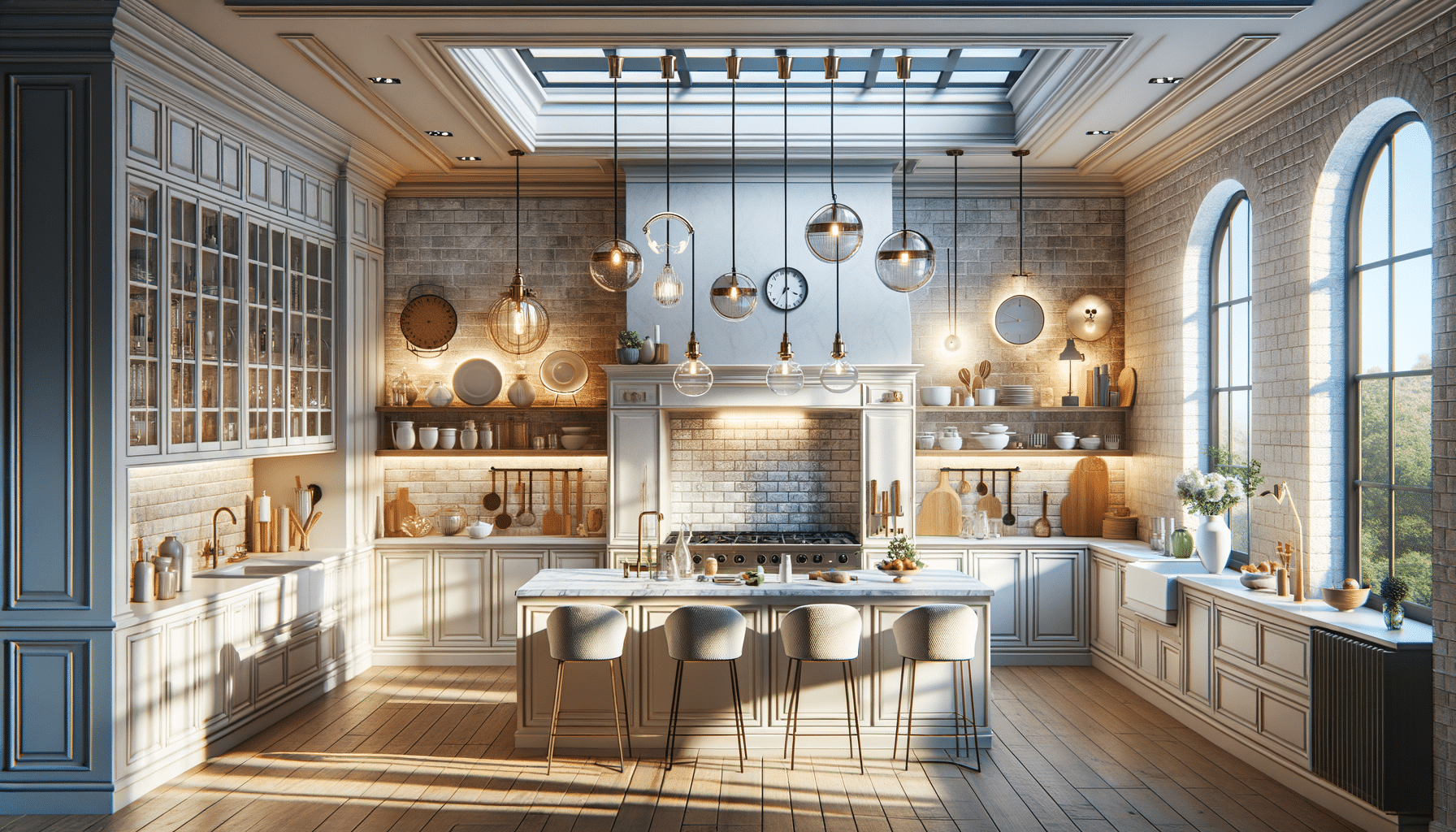
The Ultimate Kitchen Lighting Guide: Ideas to Love for Every Home
Introduction to Kitchen Lighting
Lighting plays a crucial role in the kitchen, not only for functionality but also for creating an inviting atmosphere. The right lighting can transform a kitchen from a mere workspace into a welcoming hub for family and friends. Whether you have a cozy corner kitchen or a sprawling open-plan layout, lighting can enhance both the aesthetics and practicality of your space. This guide explores versatile lighting solutions that cater to different needs, styles, and budgets, ensuring your kitchen shines in every sense.
Ambient Lighting: Setting the Mood
Ambient lighting is the foundational layer that provides overall illumination to the kitchen. It sets the tone for the space, offering a warm and inviting glow that makes the kitchen feel comfortable and spacious. Common ambient lighting solutions include ceiling-mounted fixtures such as recessed lights and flush mounts. These options are particularly effective in evenly distributing light across the kitchen, eliminating dark corners and shadows.
For a more decorative touch, consider pendant lights. These fixtures not only provide ambient light but also serve as a design element that can complement your kitchen’s style. Pendant lights come in various shapes, sizes, and materials, allowing you to choose one that resonates with your aesthetic preferences. Additionally, incorporating dimmers can offer flexibility, enabling you to adjust the lighting intensity according to different occasions and times of the day.
When planning ambient lighting, consider the kitchen’s layout and the overall design theme. A modern kitchen might benefit from sleek, minimalist fixtures, while a rustic kitchen could embrace more traditional designs. The key is to ensure that the ambient lighting harmonizes with the kitchen’s decor, creating a cohesive and welcoming environment.
Task Lighting: Enhancing Functionality
Task lighting is essential for specific work areas in the kitchen, such as countertops, sinks, and stoves. This type of lighting ensures that you have adequate illumination for cooking, chopping, and other meal preparation activities. Under-cabinet lighting is a popular choice for task lighting, as it provides focused light directly onto the countertops, reducing shadows and improving visibility.
LED strip lights are an excellent option for under-cabinet lighting due to their energy efficiency and versatility. They can be easily installed and come in various color temperatures, allowing you to choose between warm, neutral, or cool light. Additionally, LED lights have a long lifespan, making them a cost-effective solution in the long run.
For areas like the sink or stove, consider installing adjustable spotlights or track lighting. These fixtures can be directed to illuminate specific zones, providing the necessary brightness for detailed tasks. When selecting task lighting, prioritize functionality and placement to ensure that every corner of your kitchen is well-lit and conducive to efficient work.
Accent Lighting: Highlighting Features
Accent lighting is used to emphasize specific features or areas in the kitchen, such as architectural details, artwork, or decorative elements. This type of lighting adds depth and dimension to the space, creating visual interest and enhancing the overall design.
One way to incorporate accent lighting is through the use of wall sconces or picture lights. These fixtures can highlight artwork or decorative items, drawing attention to them and adding a touch of elegance to the kitchen. Another option is to use toe kick lighting, which involves installing LED strips along the baseboards or under the cabinets. This subtle lighting effect not only adds a modern touch but also improves safety by illuminating the floor.
Consider using accent lighting inside glass-front cabinets to showcase your favorite dishware or collectibles. This approach not only highlights these items but also adds a layer of sophistication to the kitchen. When planning accent lighting, think about the elements you want to emphasize and choose fixtures that complement the overall design while serving their purpose effectively.
Energy Efficiency and Smart Lighting Solutions
In today’s environmentally conscious world, energy efficiency is a key consideration in kitchen lighting. Opting for energy-efficient lighting solutions can significantly reduce your electricity consumption and lower your utility bills. LED lights are among the most energy-efficient options available, offering long-lasting performance and minimal energy use.
Smart lighting systems are another innovative solution that combines energy efficiency with convenience. These systems allow you to control your kitchen lighting remotely via smartphone apps or voice commands. You can schedule lights to turn on or off at specific times, adjust brightness levels, and even change the color temperature to suit different moods and activities.
Integrating smart lighting with home automation systems can further enhance the kitchen’s functionality. For instance, motion sensors can automatically turn on lights when you enter the kitchen, providing instant illumination without the need for manual switches. By embracing energy-efficient and smart lighting solutions, you can create a modern, sustainable kitchen that meets your lighting needs while minimizing environmental impact.


